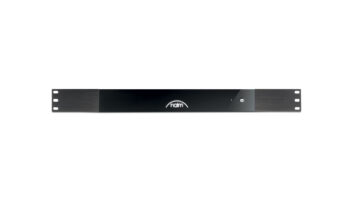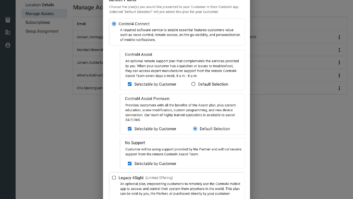I was just watching Shark Tank on ABC the other night. While most reality TV is not for me, I like to see how people pitch their businesses to the Sharks. Robert Herjavec made a comment that rang true to me. He said, “Insanity is doing the same thing over and over, but expecting different results.” It’s a common saying, but it made me reflect on the fact that one of my main goals back when I started the Home Theater Rebuild was to help people getting into the industry by sharing the mistakes I made in the past, so that they could avoid them and ramp up faster, more profitably.
I would like to think that I was successful, as I have been told by several integrators that my advice really helped. But, no one is perfect, and I continue to make mistakes and several of my colleagues do, as well. The key is learning from them. I thought I would take an opportunity to share a few of the nuggets I’ve learned over time.
1. Down-Spec to a Degree, with Caveats
It happens to us all. A client likes us, likes our work, but doesn’t want to spend (or can’t afford) our estimate. While we never reduce our prices—that just takes profit out of our business, industry, and family—we do “down-spec.” A few recent instances, however, have reminded me that caution needs to be exercised when taking this approach. Recently, one of my colleague’s clients didn’t want to do a full audio system for his living room, so he down-spec’d to a powered soundbar. The client couldn’t afford the Paradigm Soundtrack that my colleague recommended, so he went with a $400 soundbar from another brand. Unfortunately, that is where all the trouble began.
The first soundbar cut out and “popped” on occasion. After replacing the optical audio cable and trying all possible settings, it was determined that the product was defective. The manufacturer was supportive and accepted an exchange (but wouldn’t send an advance replacement, so client was without a soundbar for weeks). Then, because the soundbar was poorly designed, the optical audio ports are on the bottom and point straight down. While making a clean install, the installer bent the optical too much; it was not enough to totally damage it or to notice it right away, but it was enough to make the sound intermittent over time. It took several visits to figure out the problem and replace the optical audio cable. This one soundbar, to save the client $400 over the Paradigm, required four to five visits to the client’s home. Three of those were due to the poor design of the bar. The moral here is to be careful how far down the range of product category you are willing to go, and to know the product you are recommending inside and out. This integrator will now no longer sell this brand.
2. Don’t Let Clients Shift the Cost to You
I also heard another story recently where a customer balked at the price tag for a universal remote (including RF base station and programming) and insisted they were comfortable using multiple remotes to control channel, volume, source, etc. So the company specified and installed an IR repeater kit. Well, the client wasn’t as savvy as they thought they were and the company has spent four to five hours training the client on usage over two visits. The client saved a lot of money by not spending on a remote, but now the company has incurred significant man-hour costs in training. You can be sure that from now on, they will estimate additional training hours (and put an explicit cap on training hours included with the install) if a client opts to save money by not using a universal remote.
3. Set Expectations When Trying Solutions That are Not Guaranteed (or Don’t Offer Them at All)
Similar to the universal remote example above, a client recently called to have a TV mounted over a fireplace. Easy job. It would be even easier because power was already there and when they remodeled years ago, the contractor put in a component video cable. We went in, mounted the TV, and guess what? One of the five component video cables didn’t work…must have been damaged way back when it was installed.
We told the client his options:
a. Run new wiring (HDMI and Cat-6), but that means having to open up the wall
b. We can do an HDMI over 5-coax converter (the 5th wire is for IR, so we wouldn’t have IR repeater ability, but not critical), but converters are notoriously fickle
c. Wireless HDMI—only a last ditch effort
So the client chose to go with the 5 coax converter. It worked for a little while, then began to lose sound. The client still didn’t want to open the wall, so asked to try wireless HDMI. No luck. We finally had to open the walls and run HDMI cables. But because the client made comments and hemmed and hawed about how much it was costing them for a simple TV mounting and because I felt bad, I didn’t charge them enough for the labor. We ended up losing a little bit on this. If we had fully billed, it would have cost the client over $1,000 for a TV mounting. Had we set expectations early on (i.e. “We can try the 5-coax adapter, then the wireless HDMI, and if all else fails we can run new wires, but each visit is going to cost your $200 to set up the new device and running wires will cost more than that”) maybe the client would have been convinced to run the wire to begin with.
These all seem so straightforward and simple, but they are the types of mistakes that are easy to make in the moment, whether trying to win a job, provide a great client experience, or not seem like a charlatan. I am sure there are dozens if not hundreds of other examples, but it what it really all comes down to is setting expectations with clients up front and valuing your time as much as they value theirs.

+Todd Anthony Pumais president of The Source Home Theater Installation in New York City.







